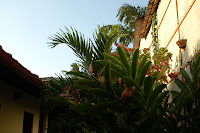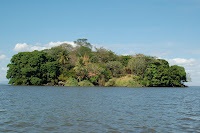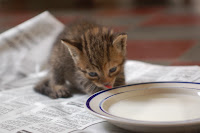 We moved to Granada
We moved to Granada We took spanish lessons and lived with a nicaraguan family
We took spanish lessons and lived with a nicaraguan family We rented a vacation house in Granada
We rented a vacation house in Granada We endured daily power and water cuts until Ortega came into power in January 2007
We endured daily power and water cuts until Ortega came into power in January 2007 We went to Las Isletas on Lago Colcibolca
We went to Las Isletas on Lago Colcibolca We visited Masaya and the huge crafts market
We visited Masaya and the huge crafts market We climbed Volcan Mombacho and saw howler monkeys
We climbed Volcan Mombacho and saw howler monkeys Christy began volunteering with La Esperanza Granada
Christy began volunteering with La Esperanza Granada We visited the volcanic islands of Ometepe
We visited the volcanic islands of Ometepe We spent many blissful days at la Laguna de Apoyo
We spent many blissful days at la Laguna de Apoyo We found a kitten in the gutter
We found a kitten in the gutter We left Granada in September 2006 to travel to Esteli, Matagalpa, Jinotega, and the Selva Negra
We left Granada in September 2006 to travel to Esteli, Matagalpa, Jinotega, and the Selva NegraEric took a full time position as a reporter for the Nica Times and freelanced for the SF Chronicle
We returned to Granada in October and rented our second home for a year
Since then we've been working and volunteering and gardening. Michelle came to stay with us for 3 months and Christy's parents were here for 2 months - January and February. Jeannine and John, friends from NYC, came to visit us as well and more are welcome and scheduled to arrive!
And now that we are really settled, we promise to be better about emailing and updating our website - as long as the power stays on.
love, c & e









